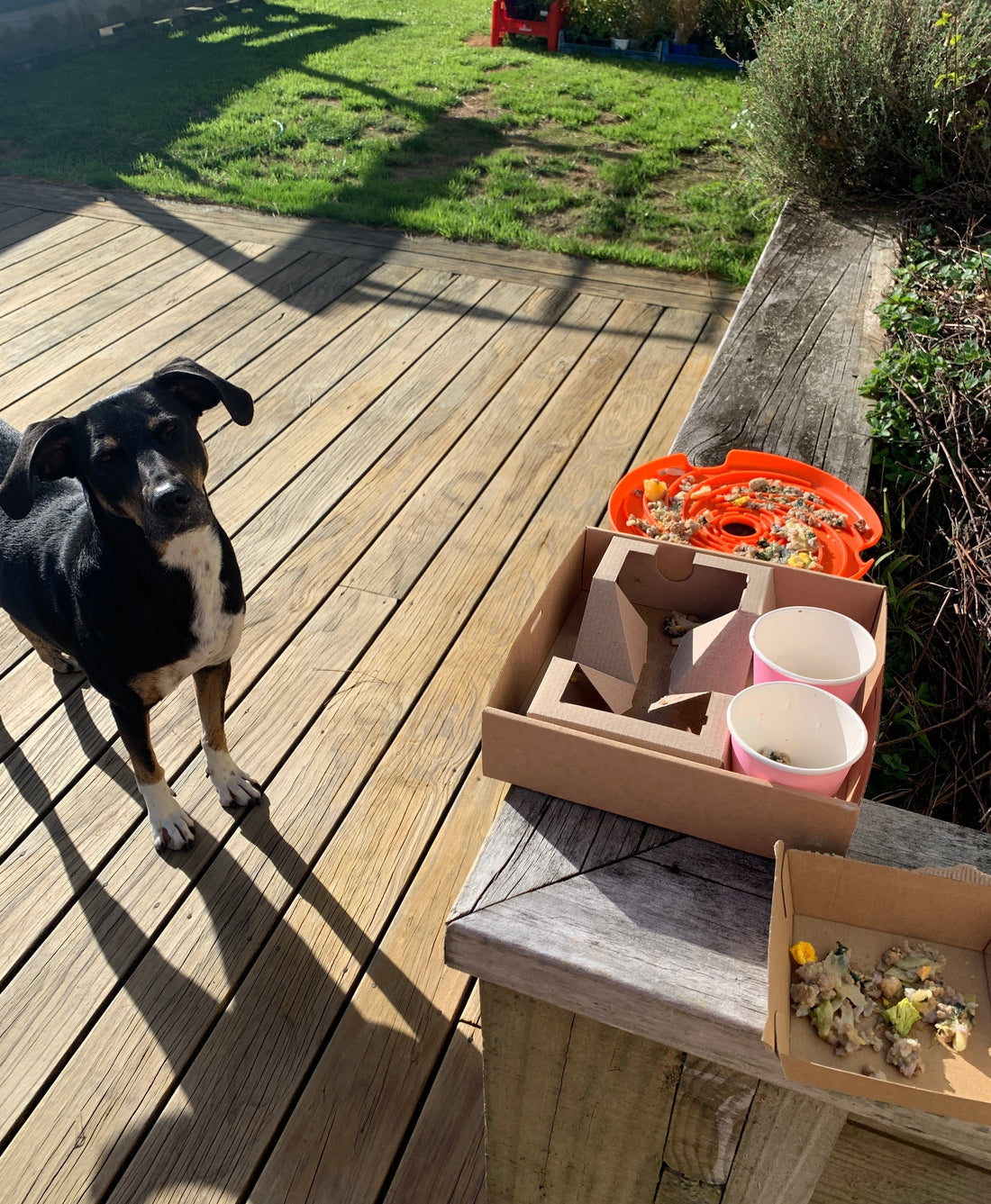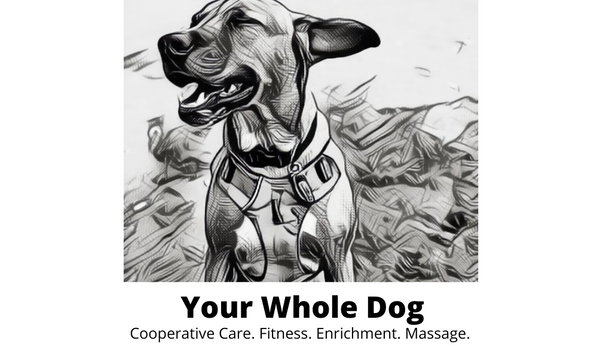
Learning, Reflecting, and Adjusting: Enrichment Isn’t About Doing More
Tigg and I just wrapped up a fantastic 4-week live class: Is it Enriching? Making Your Behavior Change Plans Count with Pet Harmony’s Emily Strong & Allie Bender, hosted through the Karen Pryor Academy.
Although I’m already familiar with Pet Harmony's Enrichment Framework, and I use it to guide the plans I create for clients, it was so valuable to revisit it through a different lens, from the learner’s side, with Tigg.
As someone who’s already pretty nerdy about meeting our dogs’ needs, it was both validating and eye-opening to work through the process with Tigg. Real-life insight? Even when you think your dog has it pretty good, there’s always room to reassess, adjust, and adapt. Dogs are living, changing beings, and life happens. Before you know it, the one thing that was maintaining equilibrium might have quietly dropped off the radar. Or a new stressor has crept in and is just starting to show itself.
Pet Harmony’s Enrichment Framework is such a brilliant, methodical way to cut through the noise and get practical. It’s a step-by-step process to finding sustainable strategies to support your dog’s physical, emotional, and behavioural health without draining your energy or turning it into a full-time job.
And, because real life is real life, I did spot a few gaps that had crept in. One of them was scavenging activities. I use ‘find it’ games and scatter feeding often, but those options tend to ramp Tigg up, especially if both dogs are out at once. Great for burning energy on a walk, but not ideal when I'm aiming for calm, nose-led foraging. I started experimenting with what I call “picnic pots” - small containers of her fresh food hidden around the garden. Once she figured it out, her pace shifted: she started using her nose more intentionally and slowed right down. It’s been such a simple but effective change.
Another gap was toy play. It’s something we used to do all the time but recently it had just… faded. Now I’ve brought it back as a way to offer movement and get her wiggles out, and some social connection, without it needing to be part of a training session or walk.
It was incredibly helpful to have Emily’s expert guidance as I made meaningful tweaks (and a few pivots) that better suit where we’re at right now.
One such epiphany was the reminder that social interaction doesn’t always have to be paired with structured training. We often fall into the habit of thinking they had to go together, to tick the “mental stimulation” box. But when training becomes another task to schedule, it can start to feel like a chore. Finding activities that serve multiple purposes, like calm foraging that doubles as solo time or toy play that covers movement and social needs, might seem like a small shift, but it can make a big difference.
There were so many gems and lightbulb moments throughout the four weeks. I mean, our cohort wasn’t just dogs, we were learning alongside a gloriously floofy cat and two goats, because meeting needs applies to all species!! But, if I had to pick, here are my top 3 takeaways:
Enrichment is defined by outcomes. Not by our intentions, good as they may be. What does your dog tell you about the activity, event, or experience? Was it enriching for them?
Enrichment isn’t about doing more. It’s about doing what actually helps your dog have a good day.
Enrichment guilt is a thing. You know that nagging feeling like you should be doing more - more tricks, more KONGs, more training, more novelty, more more more? Whether it’s your next-door neighbour, Aunty Beryl, or your Instagram feed whispering in your ear… your plan needs to be relevant to your goals, actually do-able, and, most importantly, sustainable. Doing it for a day or two is one thing. Can you do it for a year? That’s your litmus test.
If you’ve ever felt that pressure to "do more" for your dog, take a breath. Enrichment isn’t about hustle. It’s about purpose and results.
And, if you’re curious about how unmet needs might show up as behaviour challenges, or how enrichment is often the missing puzzle piece in your dog’s training plan … I’m here to help.
Want support creating realistic, sustainable plans that meet your dog’s physical, behavioural, and emotional needs without burning you out? I got you.
And speaking of burnout … this process reminded me how easy it is to slip into constant doing. Taking time out to just be and watch Tigg scavenging her picnic gave me a breather too. Enrichment isn’t just for our dogs; we need it too!
Helping dogs and their people feel more secure, confident, and fulfilled through thoughtful, individualised lifestyle plans is kind of my thing 🐾
 Tigg and her picnic pots - boxes, cups and containers with some of her fresh food diet that I'll hide around the garden for her to scavenge.
Tigg and her picnic pots - boxes, cups and containers with some of her fresh food diet that I'll hide around the garden for her to scavenge.
